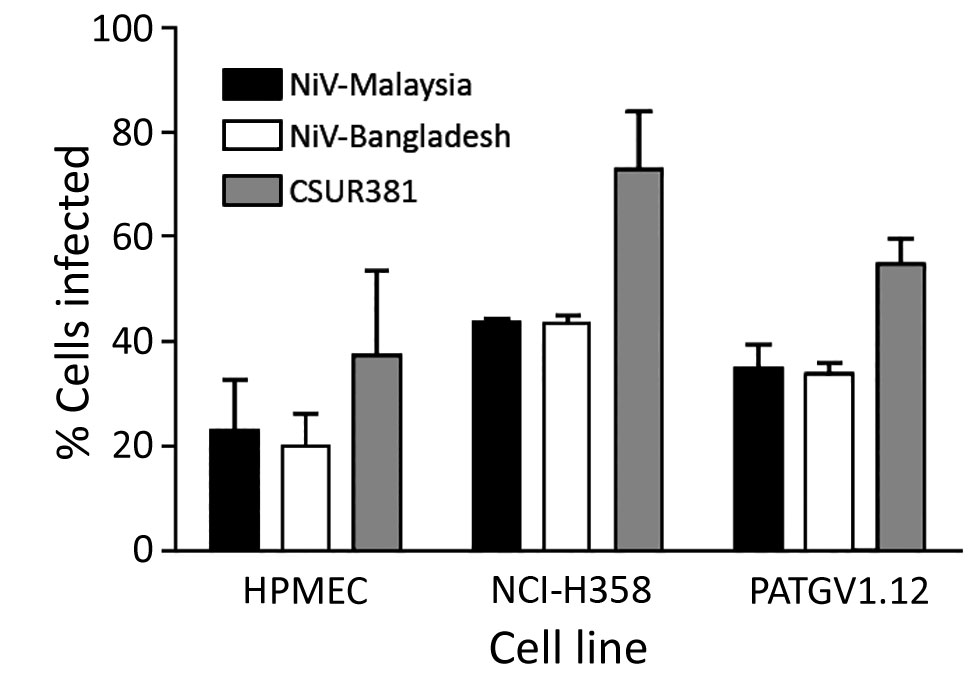High Pathogenicity of Nipah Virus from Pteropus lylei Fruit Bats, Cambodia
Maria Gaudino, Noémie Aurine, Claire Dumont, Julien Fouret, Marion Ferren, Cyrille Mathieu, Olivier Reynard, Viktor E. Volchkov, Catherine Legras-Lachuer, Marie-Claude Georges-Courbot, and Branka Horvat

Author affiliations: Centre International de Recherche en Infectiologie, CIRI, INSERM U1111, CNRS, UMR5308, Univ Lyon, University Claude Bernard Lyon 1, École Normale Supérieure de Lyon, Lyon, France (M. Gaudino, N. Aurine, C. Dumont, J. Fouret, M. Ferren, C. Mathieu, O. Reynard, V.E. Volchkov, M.-C. Georges-Courbot, B. Horvat); ViroScan 3D, Trévoux, France (J. Fouret, C. Legras-Lachuer); University Claude Bernard Lyon 1, LEM, UMR5557, CNRS, INRA, VetAgro Sup, Lyon (C. Legras-Lachuer); Unité de Biologie des Infections Virales Emergentes, Institut Pasteur, INSERM P4, Jean Mérieux, Lyon (M.-C. Georges-Courbot)
Main Article
Figure 3

Figure 3. Evaluation of entry of VSVΔG-RFPs (vesicular stomatitis virus in which the envelope glycoprotein G gene is replaced with the red fluorescent protein gene) pseudotyped with the surface glycoproteins of NiVs CSUR381 (Cambodia 2003 isolate), UMMC1 (NiV-Malaysia isolate), and SPB200401066 (NiV-Bangladesh isolate) in different cell types. Infections of HPMEC, NCI-H358 (human bronchioalveolar cells), PATGV1.12 (bat cells), and Vero cells were performed at a multiplicity of infection of 0.3, and the percentages of infected cells were evaluated 6 hours postinfection by measuring RFP by flow cytometry and normalizing values to those from Vero cells. Histograms indicate the mean of 3 independent experiments, and error bars indicate upper half of SD. HPMEC, human pulmonary microvascular endothelial cell; NiV, Nipah virus.
Main Article
Page created: December 18, 2019
Page updated: December 18, 2019
Page reviewed: December 18, 2019
The conclusions, findings, and opinions expressed by authors contributing to this journal do not necessarily reflect the official position of the U.S. Department of Health and Human Services, the Public Health Service, the Centers for Disease Control and Prevention, or the authors' affiliated institutions. Use of trade names is for identification only and does not imply endorsement by any of the groups named above.
